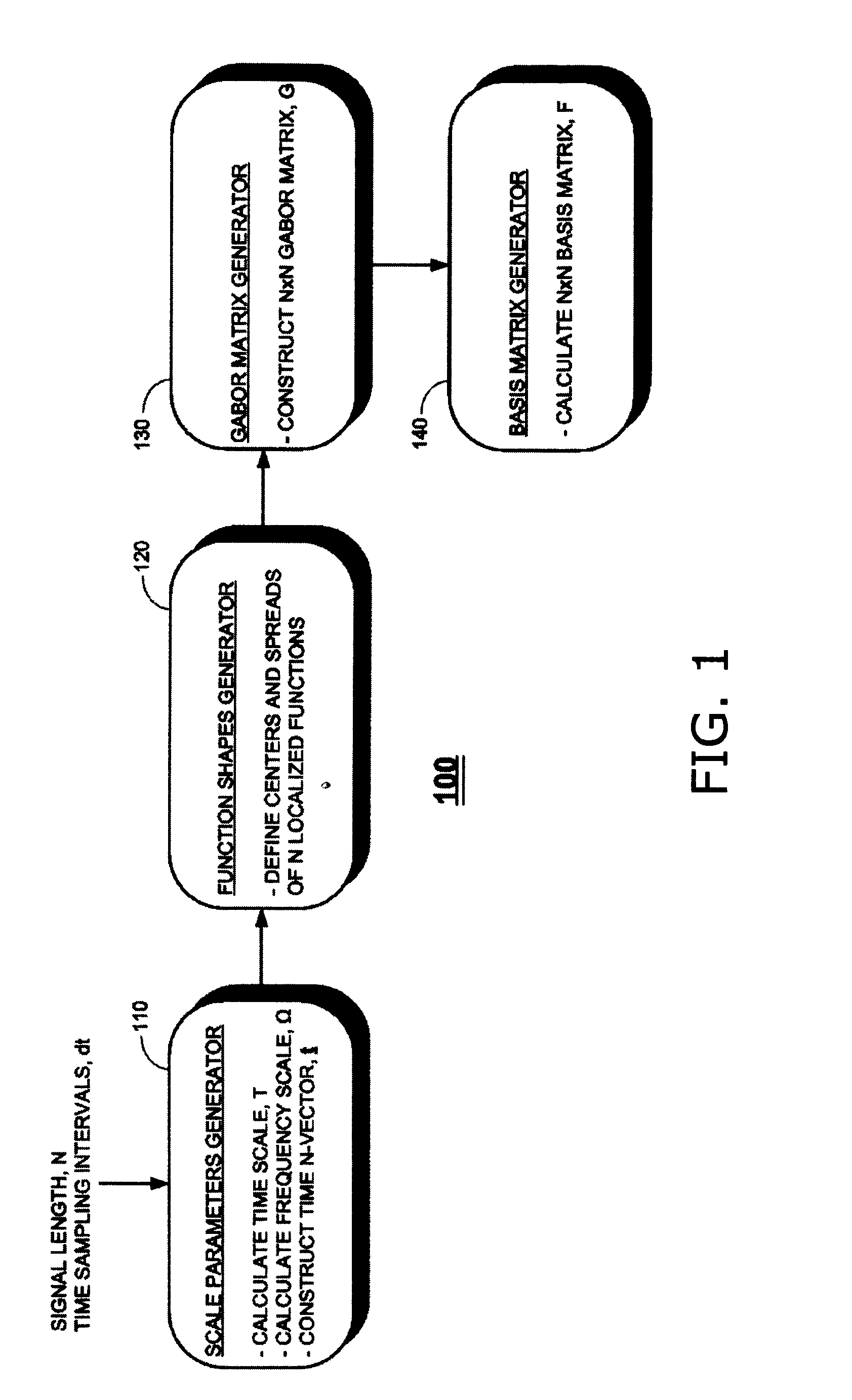Modified gabor transform with gaussian compression and bi-orthogonal dirichlet gaussian decompression
a gabor transform and gaussian decompression technology, applied in the field ofsignal processing, can solve the problems of inefficiency of local basis functions that yield efficiency, inefficiency of storing data in time-based representations, and inefficiency of global basis functions, and achieves high density of gaussian functions, simple calculation, and fast compression.
- Summary
- Abstract
- Description
- Claims
- Application Information
AI Technical Summary
Benefits of technology
Problems solved by technology
Method used
Image
Examples
Embodiment Construction
[0035]Aspects of the present invention relate to a novel transform in which a signal is represented in terms of coefficients that are calculated by overlapping the signal with a set of Gaussian basis functions. The coefficients are used to compress the signal, and the basis functions, in a modified form as described below, are used to reconstruct the signal by decompression.
[0036]In one embodiment of the present invention, referred to herein as the G-transform, the overlaps are computed with the Gabor basis functions. In another embodiment of the present invention, referred to herein as the w-transform, the overlaps are computed with a wavelet basis of Gaussians; i.e., Gaussians that are shifted and scaled in width. The overlaps determine the coefficients that provide the compressed representation of the signal.
[0037]As such, the coefficients are simple to calculate, being just the overlap of the signal with a discrete set of Gaussians. As a result, compression is performed very fas...
PUM
 Login to View More
Login to View More Abstract
Description
Claims
Application Information
 Login to View More
Login to View More - R&D
- Intellectual Property
- Life Sciences
- Materials
- Tech Scout
- Unparalleled Data Quality
- Higher Quality Content
- 60% Fewer Hallucinations
Browse by: Latest US Patents, China's latest patents, Technical Efficacy Thesaurus, Application Domain, Technology Topic, Popular Technical Reports.
© 2025 PatSnap. All rights reserved.Legal|Privacy policy|Modern Slavery Act Transparency Statement|Sitemap|About US| Contact US: help@patsnap.com



